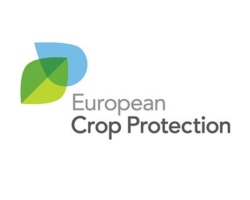ECPA Pushes for More Bee Research

The European Crop Protection Association says recent research findings into the effects of pesticides on bees fails to account for the many factors that impact bee and colony health in real life.
While the organization supports scientific research, according to an ECPA statement, these researchers have applied unrealistic pesticide dose levels in many cases and have dosed continuously bees in unrealistic environments over a long period of time that is not representative of actual field situations in agriculture.
“Although interesting measures, like the tracking of bees with Radio-Frequency Identification (RFID) devices have been introduced in the studies, EFSA is right to argue that it is necessary to repeat the experiments with other exposure levels and in other situations before being able to draw definitive conclusions,” Director General of European Crop Protection Association (ECPA) Friedhelm Schmider in a statement. “The current risk assessment scheme has proven to be effective and it is always considered good practice to regularly review and adapt in line with the latest science available”
ECPA looks forward to seeing the in-depth review, due to be published in December 2012, on the effects of neonicotinoids.
A clear distinction should also be made between individual incidents of honey bee losses and general honey bee population decline. Individual incidences have occurred due to inappropriate use of insecticides and the plant protection industry is conducting a number of stewardship campaigns to prevent such accidents in the future. However it needs to stressed that there is no scientifically proven causal link between pesticide use and a general honey bee population decline.
ECPA said the cause of honeybee colony losses in Europe is multi-factorial.
“It includes harmful parasites, climate change, habitat loss, pollution, pesticides, disease, insufficient food and Invasive Alien Species, but it is the parasitic Varroa mite that has been identified as the biggest specific threat to honey bee populations,” Schmider said. “Further problems are caused by a lack of appropriate foraging habitat in the modern agricultural landscape during some summer periods. It is also important to note that colony losses do not occur simultaneously across all regions of Europe, but are often prevalent in specific regions only.”
Schmider concluded, “The sustainability of modern agriculture, and indirectly, the crop protection industry depends on the pollinating services provided by bees. We will continue to work with all relevant stakeholders to understand and develop solutions to the bee health problem.”
Source: European Crop Protection Association, edited by Stefanie A. Toth, Online Editor





